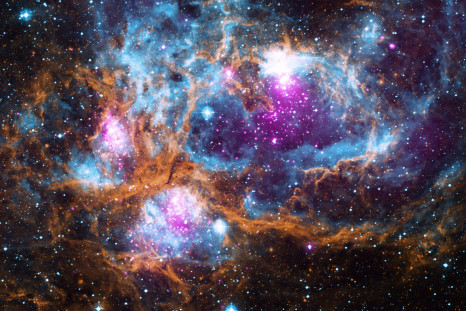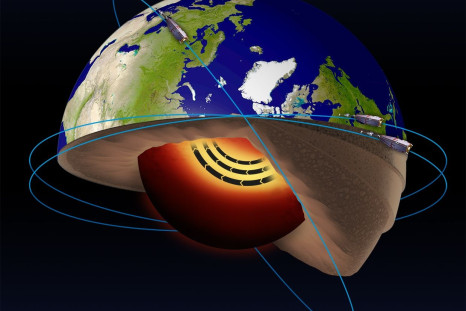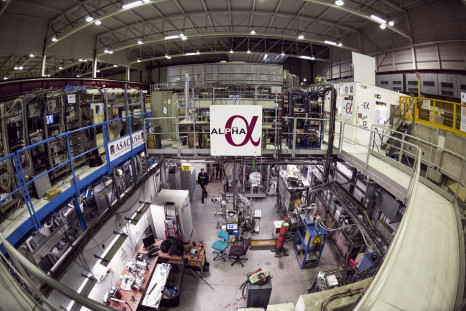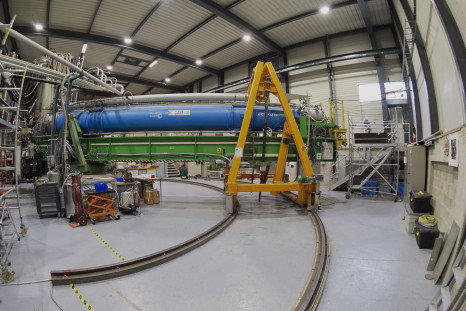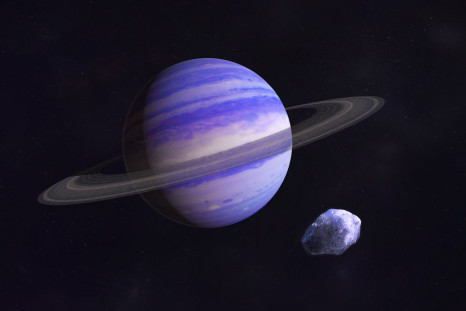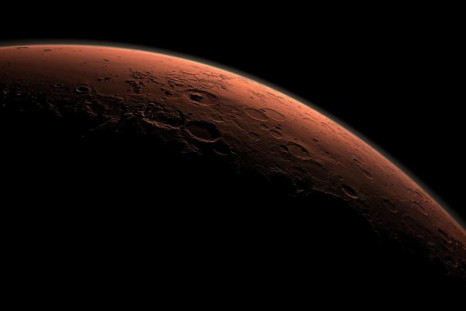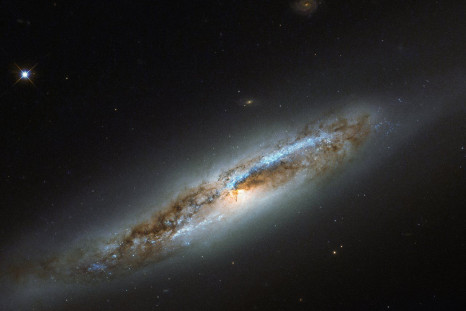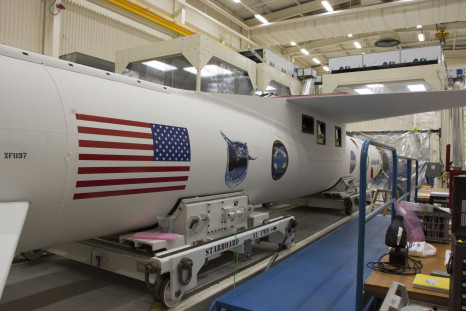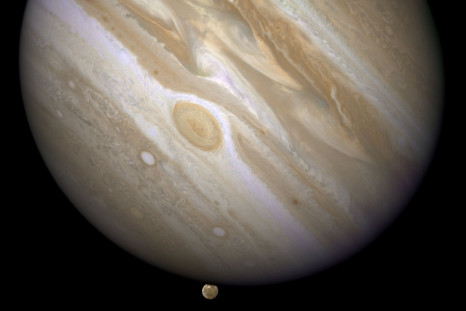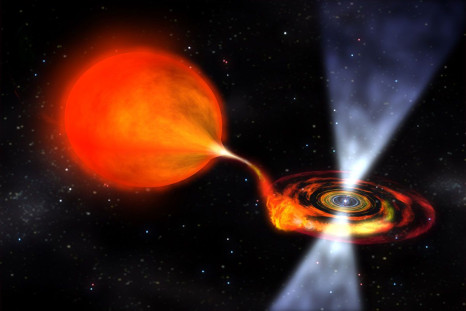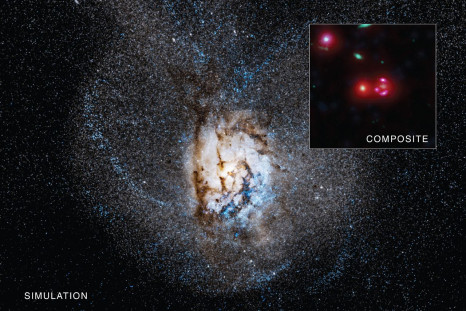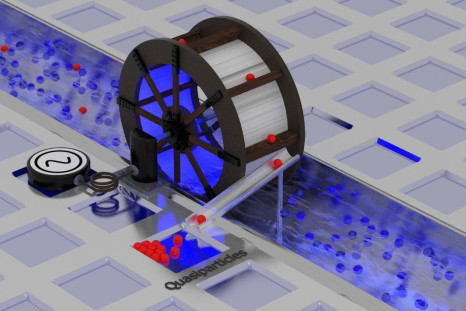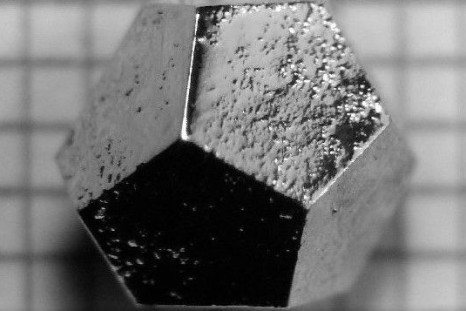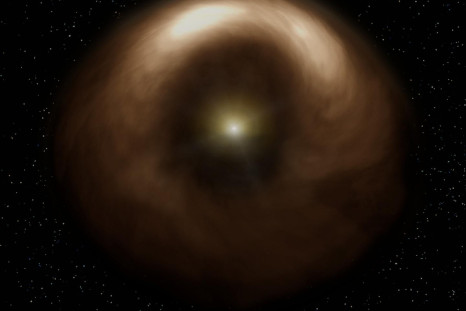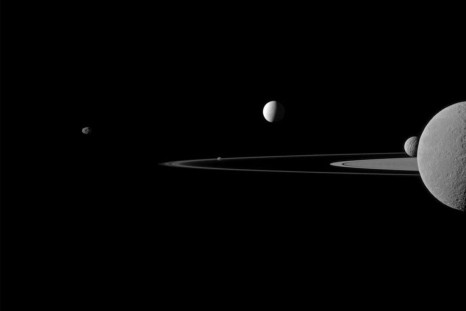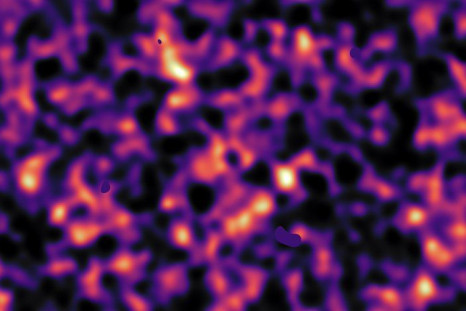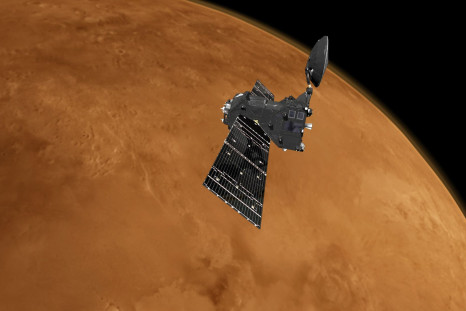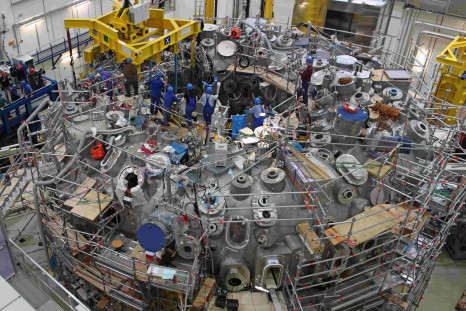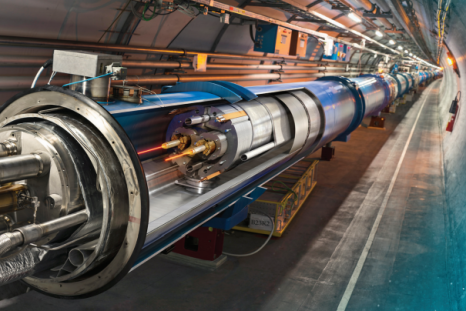Astronomers Spy NGC 6357 — A Massive Stellar Nursery Located 5,500 Light-Years From Earth
NGC 6357 — a massive cluster of stars, dust and gas located over 5,500 light-years from Earth — contains three separate groups of young and hot stars.
Scientists Discover A Molten Iron Jet Stream In Earth’s Outer Core Using A Swarm Of ESA Satellites
The colossal jet stream, located roughly 1,860 miles below the Earth’s surface, was discovered by tracking changes in the planet's magnetic field.
CERN Scientists Observe Antimatter Light Spectrum For The First Time
In a key milestone toward understanding the nature of antimatter, researchers at CERN succeeded in performing the first-ever measurement of optical spectrum of an antihydrogen atom.
Japan’s SoftBank Takes ‘First Step’ To Fulfill Pledge To Trump; Invests $1 Billion In US Satellite Startup OneWeb
The investment comes just days after SoftBank Chairman and CEO Masayoshi Son met with U.S. President-elect Donald Trump, and pledged to invest $50 billion in American startups.
CERN Experiment Hunts For Axions And Chameleons — Hypothetical Dark Matter And Dark Energy Particles
On Sunday, when the sun made its annual alignment with the black hole at the center of our galaxy, scientists at CERN focused the axion solar telescope on the celestial event.
Neptune-Mass Worlds May Be The Most Common Cold Exoplanets In The Universe, Microlensing Study Suggests
A statistical study of planets indicates that celestial bodies the mass of Neptune may be the most common planets in the outer realms of stars’ orbits.
DARPA’s AMEBA Program Could Allow Radio Communication In Places Where Conventional Wireless Doesn’t Work
As part of its "A Mechanically Based Antenna" effort, the government agency would seek to create portable low-frequency transmitters that can penetrate and propagate through radio-dead zones.
Hubble Space Telescope Photographs IC 5201 — A Distant Barred Spiral Galaxy
The barred spiral galaxy, named IC 5201, is located over 40 million light-years from Earth in the direction of the constellation Grus.
Water On Mars: Discovery Of Boron Suggests The Planet Once Had Habitable Groundwater
On Earth, Boron — a water-soluble element — is a signature left behind by evaporated water.
Scientists Discover Ancient Enzyme That Functions Without 'Decorations' In Humans
Scientists have discovered an ancient enzyme that can somehow carry out its new role in humans without overhauling its basic architecture.
Hubble Photographs NGC 4388 — A Distant Galaxy Feeling The Pull Of Its Neighbors
NGC 4388 — a galaxy roughly 60 light-years from Earth in the Virgo Cluster — has been observed exhibiting traits seen both in spiral as well as elliptical galaxies.
NASA CYGNSS Launch Live Stream: Microsatellite Cluster To Study Hurricanes Readies For Liftoff
The constellation of eight little satellites will be launched Monday morning to low-Earth orbit on board an Orbital ATK Pegasus XL rocket.
A Wandering Jupiter Shaped The Solar System, And Now We Know When it Happened
A team of researchers, using computer models to simulate the formation of a rare class of meteorites, has provided clues to when the gas giant formed.
Monkeys Could Talk Like Humans If Their Brains Didn’t Stop Them From Doing So
A study, based on experiments involving macaques, reveals that these primates possess the vocal tract anatomy needed to produce human-like speech.
What Causes Fast-Spinning Pulsar Binary Systems To Switch On And Off? New Observations Provide Clues
The observations suggest that in many millisecond pulsar binary systems, the companion star’s strong magnetic field may be responsible for switching the pulsar on and off.
Nobel Prize 2016 Live Stream: Laureates To Receive Awards In Ceremonies In Sweden, Norway
On Saturday, the Nobel Prizes in the sciences, economics and literature will be handed out during a ceremony in Stockholm, while the peace prize will be awarded in Oslo.
NASA’s Juno Spacecraft Preps For Third Close Flyby Of Jupiter
During Sunday’s flyby, when the spacecraft will pass just 2,580 miles above Jupiter’s cloud tops, seven of its eight science instruments would be switched on.
Space Junk: Japan Sends Electrodynamic Tether Into Orbit To Slow Down, Remove Space Debris
The Japanese space agency launched a cargo ship carrying an electrodynamic tether, designed in collaboration with a fishnet maker, to remove some of the debris locked in orbit around Earth.
Astronomers Spot An Ancient, ‘Hyper-Starburst’ Galaxy
The galaxy SPT 0346-52, seen by astronomers as it was 12.7 billion years ago, is churning out stars at a staggering rate of 4,500 solar masses per year.
Quantum Computing Update: Researchers Test Technique To Extend Lifespan Of Superconducting Qubits
Researchers announced Thursday that they had succeeded in increasing longevity of superconducting qubits — attractive candidates for the creation of a viable quantum computer.
Quasicrystal Found In Russian Meteorite Is Only The Third To Be Discovered In Nature
The material, which exhibits symmetry that scientists initially thought "impossible," is only the third quasicrystal discovered in nature.
When Did Smallpox Emerge? 17th Century Lithuanian Mummy Could Rewrite History Of The Deadly Disease
Analysis of viral DNA obtained from the remains of a 17th century child indicate that the disease may be just hundreds, and not thousands, of years old.
Quantum Spin Liquid — An Exotic State Of Matter — Observed In Synthetic Ytterbium Crystal
The ytterbium crystal where this extremely exotic state of matter was observed was synthesized for the first time last year by scientists in China.
How Do Planets Form? New Estimate Of Protoplanetary Disk Dust Particle Size Sheds Light On Scarcely Understood Process
Researchers estimate that the dust particles that eventually coalesce to form gigantic planets may be as small as just 150 micrometers.
Saturn’s Moons May Be Much Younger Than Previously Thought
A team of researchers has estimated the rate at which the gas giant's moons are moving away from it. The calculations suggest that the moons may not have formed 4.5 billion years ago as previously believed.
Mars One Delays Its Plan To Colonize The Red Planet, Again
The private spaceflight company, which originally wanted to send humans to Mars in 2023, has pushed back the deadline yet again — this time to 2031.
Dark Matter May Be Lot Less ‘Clumpy’ Than Previously Thought, New Survey Reveals
The survey, which covered an area containing 15 million galaxies, indicates that dark matter may be more evenly distributed in the cosmos than previously believed.
ExoMars Mission Update: Trace Gas Orbiter Carries Out Test Science Measurements
The Trace Gas Orbiter, currently locked in an elliptical orbit around the red planet, has begun carrying out preliminary scientific observations of Mars and its moon Phobos.
Nuclear Fusion: Germany’s Wendelstein 7-X ‘Stellarator’ Is Operating As Expected
The extraordinarily complex stellarator, which was switched on last December, is working with “unprecedented accuracy,” scientists revealed in a new study.
CERN LHC Update: Large Hadron Collider Wraps Up 2016 Run After Smashing Through Collision Targets
During its latest run, the Large Hadron Collider smashed through its luminosity targets by a wide margin. The next run is scheduled to begin in March 2017.



